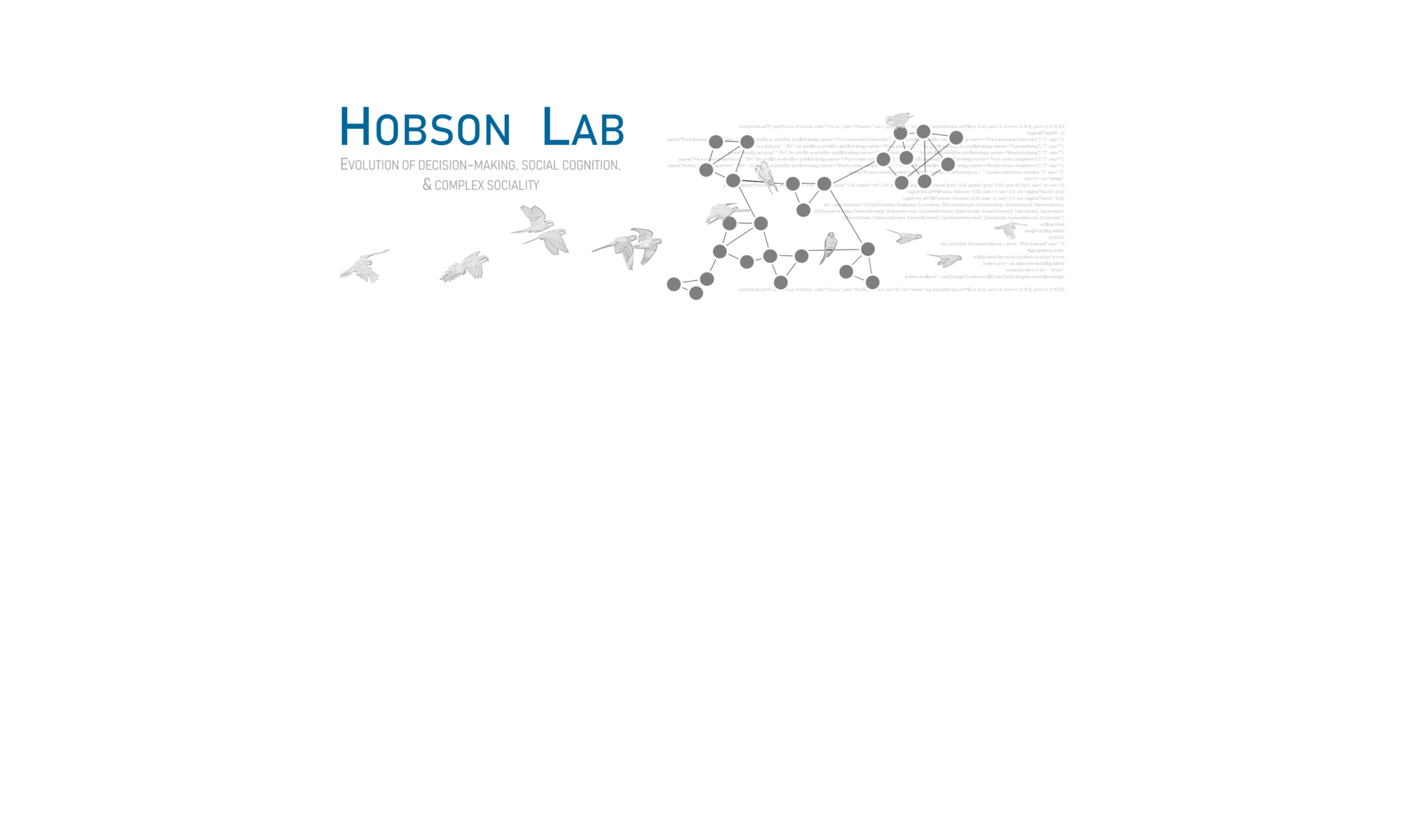Hobson Lab Postdoc Annemarie posted an updated version of our paper on deciding whether to pool behaviors prior to network analyses. The preprint is available on arXiv here.
A framework to evaluate whether to pool or separate behaviors in a multilayer network
A multilayer network approach combines different network layers, which are connected by interlayer edges, to create a single mathematical object. These networks can contain a variety of information types and represent different aspects of a system. However, the process for selecting which information to include is not always straightforward. Using data on two agonistic behaviors in a captive population of monk parakeets (Myiopsitta monachus), we developed a framework for investigating how pooling or splitting behaviors at the scale of dyadic relationships (between two individuals) affects individual- and group-level social properties. We designed two reference models to test whether randomizing the number of interactions across behavior types results in similar structural patterns as the observed data. Although the behaviors were correlated, the first reference model suggests that the two behaviors convey different information about some social properties and should therefore not be pooled. However, once we controlled for data sparsity, we found that the observed measures corresponded with those from the second reference model. Hence, our initial result may have been due to the unequal frequencies of each behavior. Overall, our findings support pooling the two behaviors. This framework can be used for any type of behavior and question, however, caution should be used when interpreting the results as some measures are sensitive to data properties, such as unequal rates of observed behavior. This framework will help researchers make informed and data-driven decisions about which behaviors to pool or separate, prior to using the data in subsequent multilayer network analyses.





